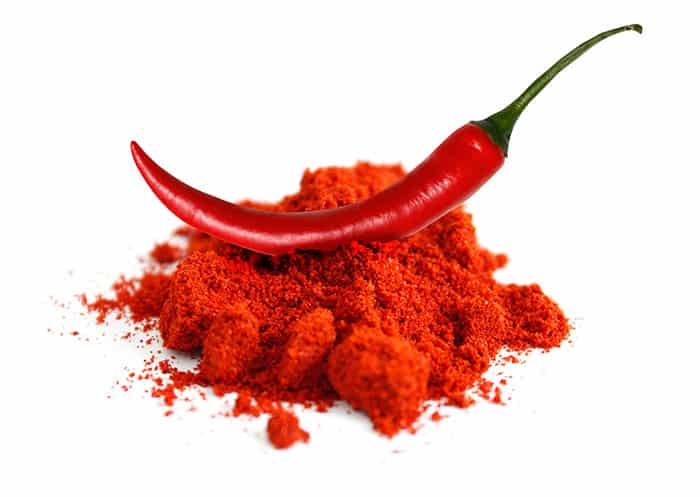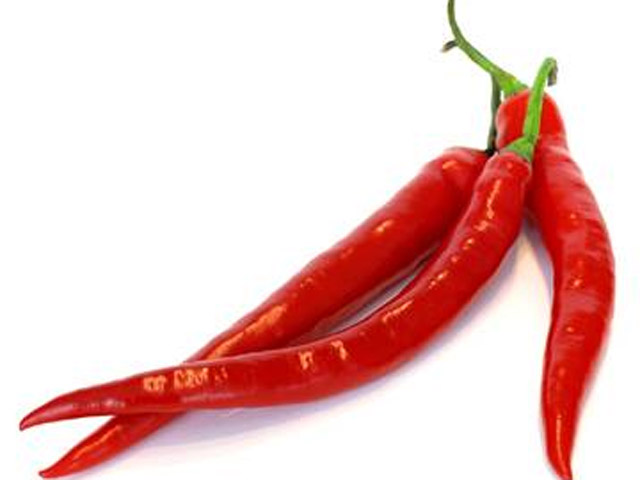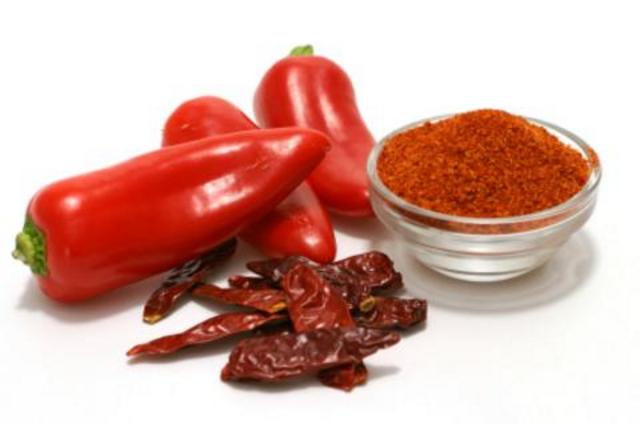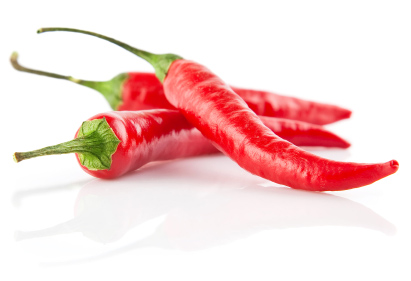Cayenne pepper
As cayenne pepper ( [ kajɛn ] ) are called ground chillies. The basis for this is usually provided by the dried fruits of sharp Chilisorte Cayenne; but often spice powder cayenne from other similar varieties are sold under this name. However, the Cayenne is not, as one might infer from its name, from the fruit of a pepper family ( Piperaceae ) won. A characteristic feature is the slightly smoky, slightly bitter taste and pungency that is specified with 30,000 to 50,000 Scoville units. This sharpness causes the capsaicin with a content of less than 1%. Chili also contains a lot of vitamin C.
History
The origins of the spice in Latin America. Findings prove in Peru in prehistoric tombs in Ancon and Huaca Pieta that already 7000 BC took place cultivation experiments. The Spaniards who came to America in the 15th century, estimated the dried peppers as a substitute for the domestic black pepper. They said they were pimentia and led them from their homeland. The Portuguese brought the plant to their homes and their settlements on the East Indies. The plant was soon known throughout southern Europe and spread from there in all the main European cities. In the 18th century powdered cayenne pepper was especially popular in England, which became known from the colonies Indian dishes were flavorful. Today cayenne pepper is also used in powdered form, va to dishes from India, Indonesia, South America and China.
Medical Application
The value-determining percent of ingredients are the capsaicinoids, including capsaicin, which are responsible for the sharpness. The pungent compounds will also bring the pain and heat receptors in the skin and mucous membrane and thus cause an increase in blood flow. This effect is used for topical treatment of painful muscle tension in the shoulder and arm area and the spine, for example in heat patches.
Further application
Cayenne pepper is also a component of some pepper spray.










